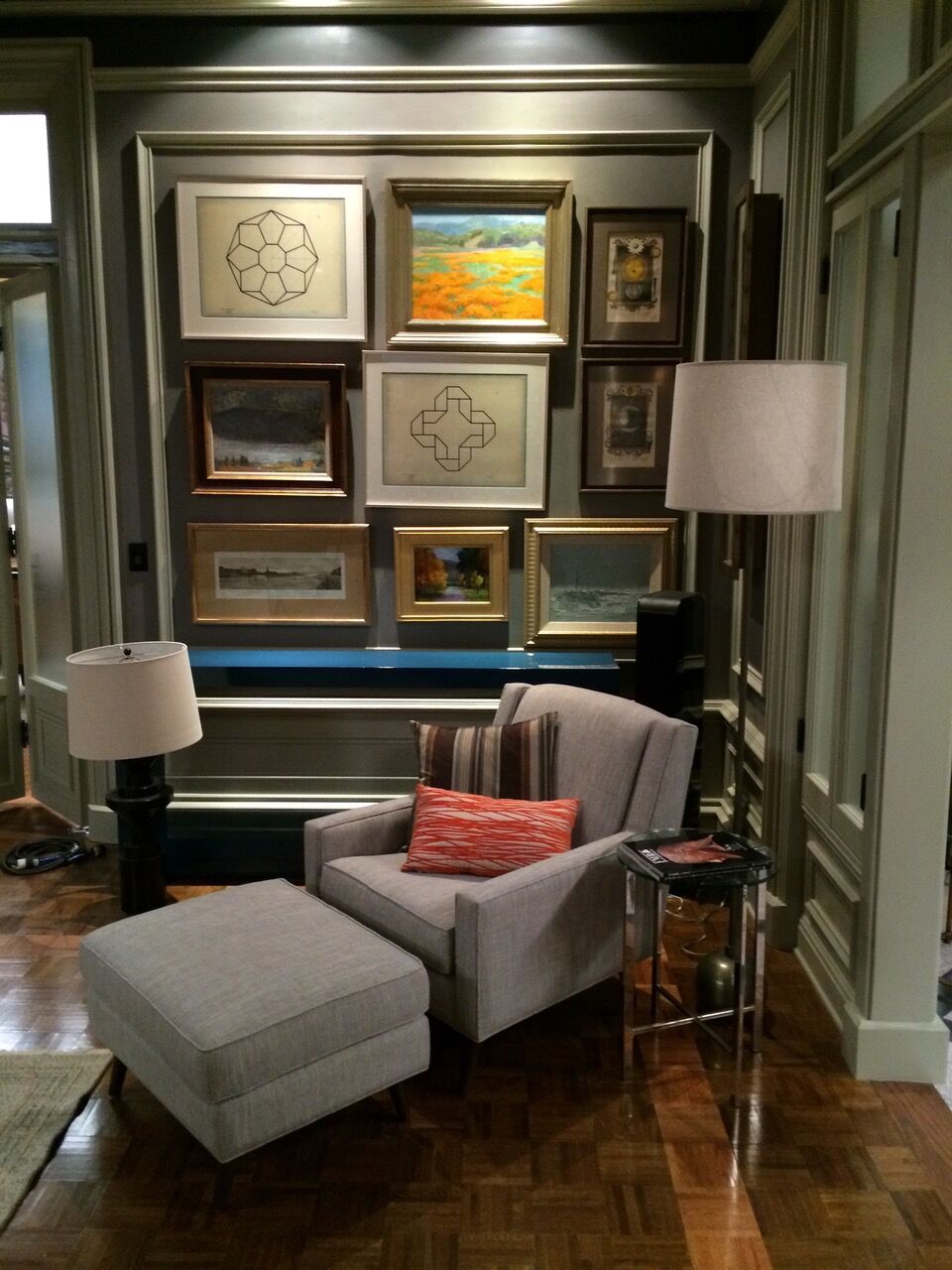Art Market
How Artwork Gets into Movies

Set for Nip/Tuck. Courtesy of Ellen Brill.
At first glance, the geometric red and orange painting hanging behind Reese Witherspoon in a scene from the 2017 romantic comedy Home Again could pass as an authentic Mark Rothko. The color blocks are roughly similar to the great Abstract Expressionist’s signature style. And a pricey Rothko is certainly a plausible possession for Witherspoon’s character, who lives in the sprawling Hollywood home of her fictitious Oscar-winning film director father.
But far from being a multi-million dollar Rothko, the Home Again artwork was created by Catherine Booker Jones, an Alabama-based painter whose work caught director Hallie Meyers-Shyer’s attention on a Pinterest board.
Even as computer-generated images allow Hollywood directors to create increasingly dazzling spectacles for their films, the fundamental task of decorating a set still requires working with real artists and deftly navigating decades-old copyright laws. For any project, finding period-appropriate artwork with legal clearance to appear on screen can be a real challenge. That’s why, when it came to putting art on the silver screen for the Meyers-Shyer rom-com, it made more sense to hang a commissioned work by Jones reminiscent of Rothko than a real original.
“Art is one of the hardest parts of what we do for film,” says Ellen Brill, an eight-time Emmy nominated set decorator who designed Home Again. “It really is.”

Courtesy of Ellen Brill.

Set for Home Again. Courtesy of O. Retentoff.
Under the Copyright Term Extension Act of 1998 (an extension of the Copyright Act of 1976), artworks generally enter the public domain 70 years after an artist’s death. Until that time, artists or their estates retain the rights to the display and use of their work, and must clear any appearance in a film (artists generally retain their rights even if a specific work is actually owned by someone else).
Even when an artist’s work is slated to enter the public domain, an artist’s estate, a museum, a photographer, or another entity may retain rights to the images, making the clearance-getting process murky and tiresome. This makes it difficult to use works by modern masters such as Rothko (who died in 1970), for example.
The clearance process is so arduous, in fact, that productions usually have a person devoted to the job: a clearance coordinator. Some projects even require an entire legal department. Clearance coordinators are responsible for obtaining legal permission to use a range of components—from book titles to street addresses, billboard designs, names, and artwork.
When getting clearance for artwork to appear on screen, the coordinator often requests permission from multiple entities, such as an artist’s estate and a museum. Given the tangled nature of copyright and the potential for copyright infringement lawsuits, “you have to cover your bases across the board,” says Rose Lagacé, a Toronto-based production designer who has worked on the television series Covert Affairs and films on Netflix and Bravo.

Set for Nip/Tuck. Courtesy of Ellen Brill.
Set decorators have become adept at maneuvering around the system. Unless a work by a canonical artist is expressly scripted (as in the case of a Jasper Johns American flag painting that Lagacé recalls was specified for Covert Affairs), they often turn to local and emerging artists who are easier to work with, rather than jump through the legal hoops required to use a work by a famous artist.
Cost is one factor in avoiding works by established masters, since clearance fees can be high. “If I work with a local artist or someone I find and contact online, I can make a deal with them and say, ‘Hey, I saw your art, I’d love to use it in this project, here’s X amount of money—can I rent three pieces from you and hold them for two weeks, or can you send me files?’” explains set decorator Lydia Marks, who has designed sets for films such as The Devil Wears Prada, Sex and the City (1 and 2), and Broken Flowers. “That’s easier than trying to track down something that exists somewhere that you have to backtrack on and go through a clearance process.”
For the 2008 film Synecdoche, New York, Marks commissioned Alex Kanevsky to paint the work supposedly created by Catherine Keener’s character. When designing a room required to have 27 portraits for the television series American Horror Story, Brill commissioned a Florida-based painter to create five of them.
Set directors sometimes also tap local artists to paint in the style of more art historically recognizable masterpieces, such as in Home Again. Set decorators must make sure the work is reminiscent enough without qualifying, legally, as copyright infringement.
“If you can’t [afford to use fine art], you have to figure out other ways to make it look like you’re using real, good stuff,” Brill says. “A lot of times you can have your scenic painter paint something ‘in the style of’, and if it’s different, then you can get away with it.”

Set for Home Again. Courtesy of O. Retentoff.
In cases where time is a factor, though, and no specific artworks have been scripted, set decorators may opt to use commercial companies that offer pre-cleared material for film and TV productions. When Spanish production designer Sonia Aranzabal, who has worked on The Bourne Ultimatum and Broken Embraces, recently had two days to design the set for a commercial that would be broadcast across Europe and the Middle East, she turned to hassle-free Cuadros Rent gallery in Madrid.
Such galleries exist across the globe, and unsurprisingly, there are many in Los Angeles. Using works in these galleries comes with no litigation risk. But designers are liable to see their selections star elsewhere on screen. “Easily, you could see a piece on one show, and then, a week later you can see it on the wall in someone else’s apartment,” Brill explains. “So that’s kind of a reason not to want to do that.”
After all, we expect film and television to provide singular stories full of glitzy stars, extraordinary situations, and dazzling artwork most of us could never afford. Seeing the same piece of art in two totally separate shows pierces the illusion. So while clearance coordinating isn’t a job characters often have on the silver screen, that hard work off-screen makes the magic feel more real.
Karen Chernick

No comments:
Post a Comment